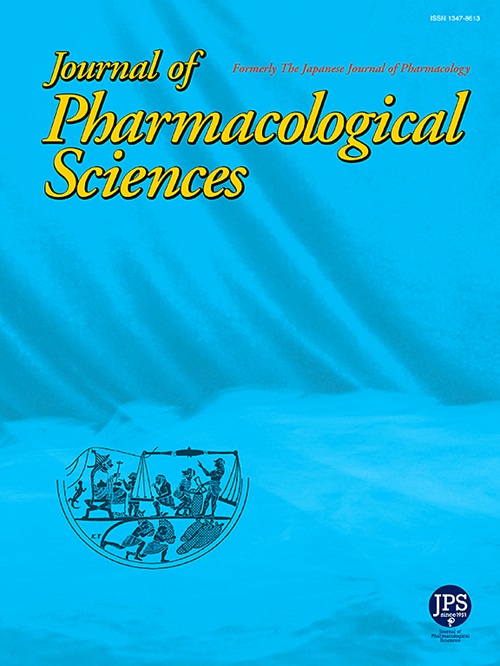TPNA10168是一种Nrf2激活剂,通过调节MAPK和NF-κB通路,减轻lps诱导的小胶质细胞炎症
IF 2.9
3区 医学
Q2 PHARMACOLOGY & PHARMACY
引用次数: 0
摘要
核因子红细胞2相关因子2 (Nrf2) -抗氧化反应元件(ARE)通路是细胞通过诱导抗氧化蛋白抵抗氧化应激的主要防御机制。Nrf2的化学诱导剂通常表现出抗炎特性。TPNA10168最初被鉴定为Nrf2-ARE激活剂,先前已被证明以nrf2不依赖的方式减弱干扰素γ诱导的BV-2小胶质细胞炎症反应。然而,其对初级小胶质细胞的抗炎作用尚不清楚。在本研究中,TPNA10168显著抑制脂多糖(LPS)诱导的炎性基因表达,包括肿瘤坏死因子-α、白细胞介素(IL)-1β和IL-6。即使Nrf2敲低,TPNA10168的抗炎作用仍然存在。机制分析显示,TPNA10168抑制lps诱导的细胞外信号调节激酶、p38丝裂原活化蛋白激酶和核因子-κB (NF-κB) p65的磷酸化,但不影响NF-κB核易位。这些发现表明TPNA10168通过抑制促炎信号通路(部分通过nrf2非依赖性通路)来减弱小胶质细胞的激活,是一种有希望调节神经炎症的化合物。本文章由计算机程序翻译,如有差异,请以英文原文为准。
TPNA10168, an Nrf2 activator, attenuates LPS-induced inflammation in microglia through modulation of MAPK and NF-κB pathways
The nuclear factor erythroid 2-related factor 2 (Nrf2)–antioxidant response element (ARE) pathway is a major cellular defense mechanism against oxidative stress through the induction of antioxidant proteins. Chemical inducers of Nrf2 often exhibit anti-inflammatory properties. TPNA10168, originally identified as an Nrf2–ARE activator, has previously been shown to attenuate interferon-γ-induced inflammatory responses in BV-2 microglial cells in an Nrf2-independent manner. However, its anti-inflammatory effects on primary microglia remain unclear. In this study, TPNA10168 significantly suppressed the lipopolysaccharide (LPS)-induced expression of inflammatory genes, including tumor necrosis factor-α, interleukin (IL)-1β, and IL-6, in primary microglia. The anti-inflammatory effects of TPNA10168 persisted even after Nrf2 knockdown. Mechanistic analysis revealed that TPNA10168 inhibited LPS-induced phosphorylation of extracellular signal-regulated kinase, p38 mitogen-activated protein kinase, and nuclear factor-κB (NF-κB) p65 without affecting NF-κB nuclear translocation. These findings indicate that TPNA10168 attenuates microglial activation by inhibiting proinflammatory signaling pathways, in part through Nrf2-independent pathways, and is a promising compound for modulating neuroinflammation.
求助全文
通过发布文献求助,成功后即可免费获取论文全文。
去求助
来源期刊
CiteScore
6.20
自引率
2.90%
发文量
104
审稿时长
31 days
期刊介绍:
Journal of Pharmacological Sciences (JPS) is an international open access journal intended for the advancement of pharmacological sciences in the world. The Journal welcomes submissions in all fields of experimental and clinical pharmacology, including neuroscience, and biochemical, cellular, and molecular pharmacology for publication as Reviews, Full Papers or Short Communications. Short Communications are short research article intended to provide novel and exciting pharmacological findings. Manuscripts concerning descriptive case reports, pharmacokinetic and pharmacodynamic studies without pharmacological mechanism and dose-response determinations are not acceptable and will be rejected without peer review. The ethnopharmacological studies are also out of the scope of this journal. Furthermore, JPS does not publish work on the actions of biological extracts unknown chemical composition.

 求助内容:
求助内容: 应助结果提醒方式:
应助结果提醒方式:


